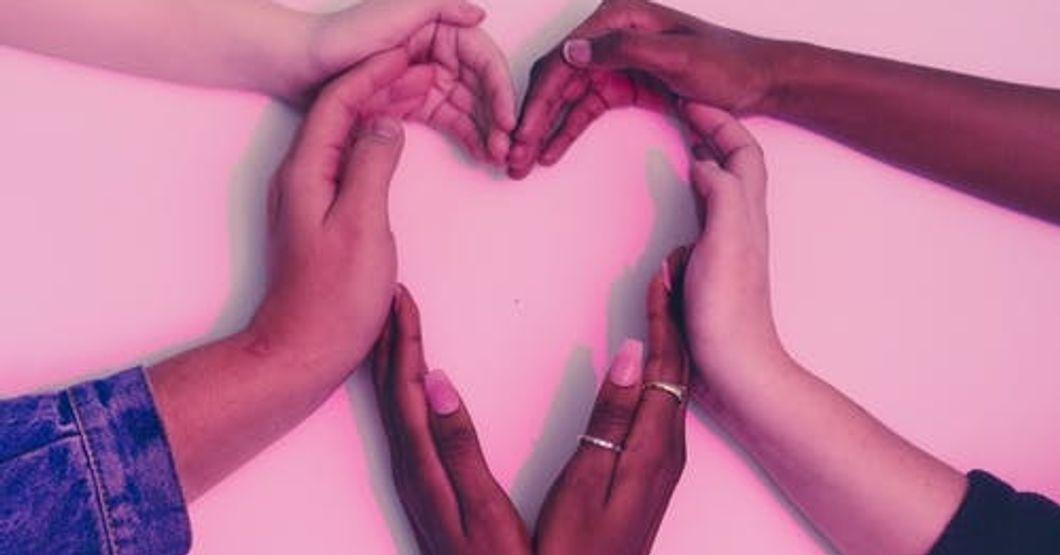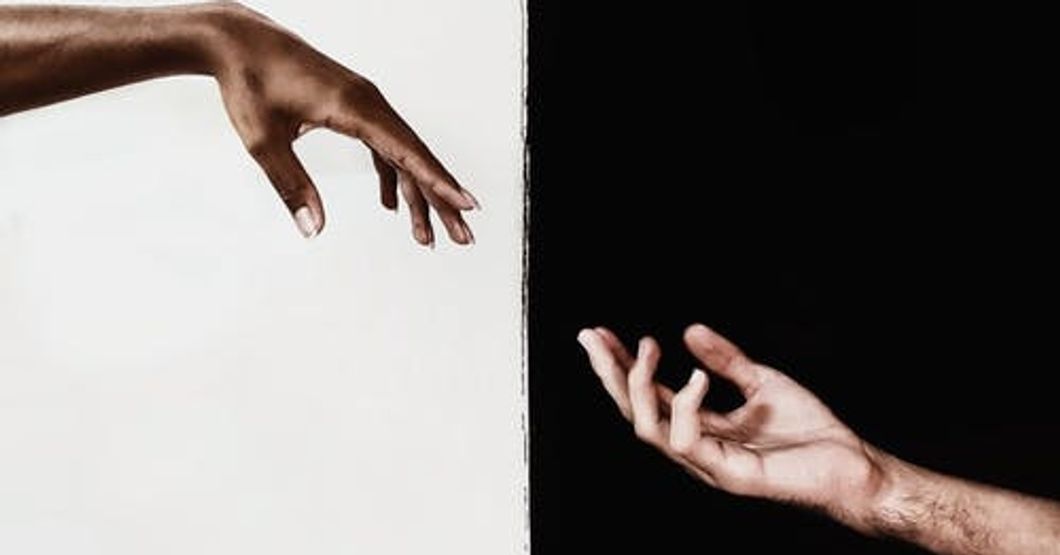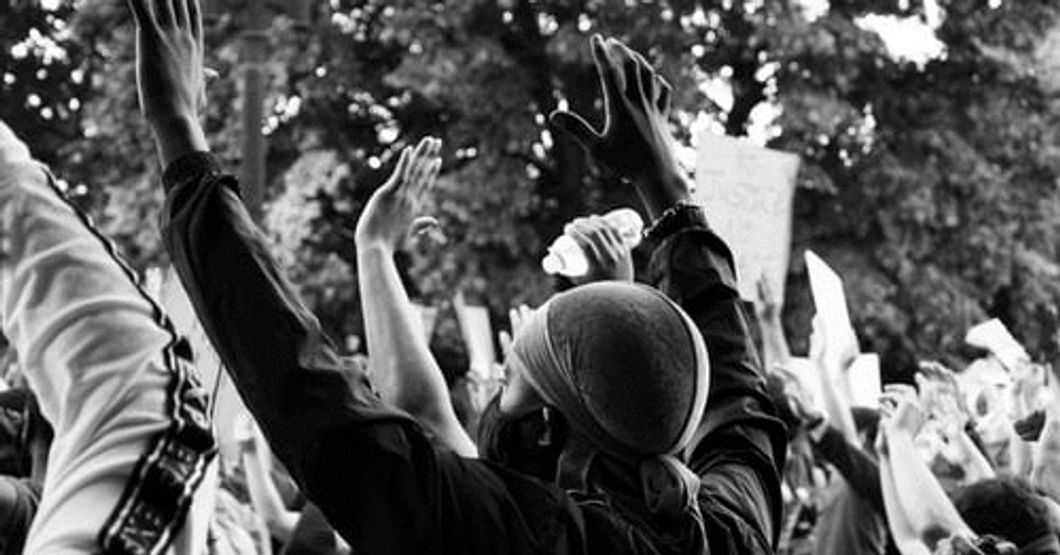Thanks to the Black Lives Matter movement, people are becoming more aware of the seriousness of implicit race bias, no matter their position or place in society.
There is a new urgency to educate ourselves, have uncomfortable yet necessary conversations, and reflect on and reduce our own racist tendencies. However, the words "reflect" and "reduce" can be ambiguous to those who are just beginning to face the mechanisms that have been ingrained in us since birth.
So, how do we realize our implicit race biases, and then, how do we change or remove them?
A 2012 study called "Long-term reduction in implicit race bias: A prejudice habit-breaking intervention" has been successful in proving a few strategies to address those questions.
To start off, what is implicit race bias? Breaking it down, implicit bias is the unconscious attitudes or stereotypes that feed into the way we understand others, act towards others, and make decisions that affect others. When these attitudes or stereotypes concern race, or the color of someone's skin and texture of someone's hair, they become implicit race biases.
An example is assuming that black men are violent and associating them with weapons.
Or, assuming that you cannot talk to Latinos because they don't understand English. Or, pitying Black women because their hair must be so hard to deal with. In reality, many kind, Black men have faced the consequences of that assumption, many Latinos face discrimination for that assumption, and many Black women are insulted by that assumption.
So, what are the larger effects of implicit race bias? Well, the study states that "accumulating evidence reveals that implicit biases are linked to discriminatory outcomes ranging from the seemingly mundane, such as poorer quality interactions, to the obviously consequential, such as constrained employment opportunities and a decreased likelihood of receiving life-saving emergency medical treatments".
In addition, with the current Black Lives Matter movement in full swing, we can see that implicit race bias is present and, too many times, abusive or deadly at the hands of the police.
From these examples, we can see just how powerful our implicit race bias can be, from ruining someone's day, to reducing someone's chances to put food on the table for their family, to ending someone's life.
A little bit about this study right off the bat: In 2012, 91 non-Black introductory psychology students participated in this study for course credit.
They were 67 percent female and 85 percent white.
The study took place over 12 weeks and consisted of a control group of 38 students and an experimental group of 53 students.
To measure implicit race bias before, during, and after the intervention, participants took an implicit association test (IAT) that anyone can find and take by clicking here.
The results of the study showed that someone who scored a "moderate preference for whites over Blacks" in the IAT before the intervention, scored a "slight preference for Whites over Blacks" after the intervention. Additional effects were that participants grew increased concern for discrimination and the reduced implicit bias results stayed the same another eight weeks after the intervention.
The researchers suspected that the intervention grew new awareness of the participant's spontaneous biases and created ever-rising levels of concern.
Read through these next five strategies that may help reduce implicit racial bias so that you may apply them to your daily life.
I recommend taking the IAT linked above before or after reading these strategies, and then again after you feel you have spent some time applying them to your life.
1. Stereotype Replacement

This consists of replacing stereotypical responses with non-stereotypical responses. A response is a thought or action in reaction to something. So, a stereotypical response is a reaction based on a stereotype. Here are the steps:
1. Recognize that your response is based on a stereotype.
2. Label that response as a stereotype.
3. Reflect on why the response occurred.
4. Replace that response with an unbiased response.
5. Consider how that biased response can be avoided in the future.
For example, you see a Black man walking towards you on the sidewalk. A hand immediately reaches for your phone, keys, or pepper spray and you consider crossing the street.
1.You recognize that you are responding based on the stereotype that Black men are associated with violence.
2.You label that response as stereotypical.
3.You reflect that that response might have occurred due to the portrayal of Black men in the media and the lack of Black men you have been acquainted within your life.
4. You replace that defensive response with a kind smile, nod, or "hello" as you pass him.
5. You consider that when faced with this situation in the future, you will remember this instance and choose kindness over stereotypical fear.
2. Counter-stereotypic imagery

This strategy consists of imagining counter-stereotypic others in detail. Counter-stereotypic means to go against or oppose the stereotype. These can be abstract, like imagining smart Black people, gentle Black men, and non-sassy Latino women.
They can also be famous, like Barack Obama, Rosa Parks, Will Smith, Morgan Freeman, and Jennifer Lopez. Or, these people can be non-famous such as a personal friend.
For example, when you find yourself attributing a stereotype to a person just based on the way that they look, consider that there are lots of people that look the same, yet do not maintain that stereotype.
By countering stereotypes with the knowledge that so many people of color do not fall into those stereotypes, you can break down the mechanisms in your mind that promote them.
After a while, stereotypes will start to sound ridiculous as it becomes more and more obvious that a whole population of people cannot have the exact same personality traits. You can also consider how you would feel to be associated with a negative stereotype by almost everyone who crosses your path (more on that in number four).
3. Individuation

This strategy relies on preventing stereotypical assumptions by obtaining specific information about individual group members. Evaluating specific members of a target group based on personal attributes rather than group-based attributes helps to reduce biases.
To complete this task, you must make the effort to talk personally with the people of color that you pass on a daily basis. This may consist of people in your classes, in line at the grocery store, coworkers, on the train, and even on online platforms.
If you know that you see the same person on your routes each day, think about what assumptions you have made about them. Then, make an effort to kindly ask them how they are doing, how their day is going, or anything else that fits the scenario.
Always do this with sincerity and respect. You will be surprised by how speaking to them instantly destroys your preconceived notions. Stereotyping is often dehumanizing and objectifying, so simply giving those people a voice and listening to their perspective, no matter what they say, can illuminate individuality.
4. Perspective taking

This strategy involves taking the perspective of a member of a stereotyped group. In other words, putting yourself in their shoes. This can increase psychological closeness to that group, which improves your automatic evaluations of that group and the people in it.
So, every time you make an assumption and decision about someone based on a stereotype, consider how you would feel if your external world relied on other people's stereotypical ideas of you.
Returning to the same example as number one, a black man walking past you on the sidewalk, imagine how you would feel if almost every person you passed responded to you in a fearful or defensive way. Think of how grateful that man would be to receive a smile and a "hello" instead.
For those who are white or white-passing, this is also a call to consider your privilege. Consider all of the things that you don't have to think about or deal with that non-white passing people do.
Do you have to consider that the reason you didn't get that job was because of your skin color? Can you assume that when you speak up in a group of all white people, your voice will be heard? Do you have to search harder to find products and services that consider your skin color and hair texture?
Can you assume that any book store or postcard will represent people of your color and history? When you get pulled over, are you scared for your life? Do you have to teach your children how to make it home safe every night in a world where society and police devalue them?
When you go into stores, do staff follow you around to keep an eye on you? Do you have to consider that if someone does not like you, even teachers and other superiors, that it might only be because of the color of your skin? These questions, and hundreds more, shed light on the privileges that white or light skin grants its inhabitants.
I urge you to spend a day going about your normal routine while asking yourself simple questions like the ones above.
5. Increasing opportunities for contact

This strategy involves seeking circumstances to encounter and engage in positive interactions with all kinds of people and colors. Increased contact can reduce implicit biases by altering our cognitive representations and improving our evaluations of out-group members.
This is similar to individuation, in which it requires physical closeness and the curiosity to understand the experiences of those who do not look like you. However, this requires a bit more than striking up a casual conversation with your Black Uber driver or coworker.
If you are attending university, this might involve seeking out clubs, classes, or town hall meetings that you know to be more diverse and/or focussed on diversity and the experiences of people of color. If you are white and used to being around white people, go somewhere where you might be the minority of the group for once.
If you are not attending university, or even if you are, change up where you shop or receive services once in a while, especially if you live in or near a city where there are endless options. Try out companies and restaurants owned by or popular among Black, Latino, and Asian people.
This is important for physically and mentally expanding outside of white idealism and it is also incredibly important that we support the businesses of people of color as much as or more than huge commercial companies like Target, Walmart, and McDonald's.
And most importantly, listen. Listen to the voices of people of color. Understand that they can be drastically different from each other, and that is beautiful and worth your awareness.
Normalize seeking out diversity to expand your horizons and knowledge of what you do not know.
I hope you can begin to try out at least one or two of these strategies to reduce the biases that you may not even be aware of. There is no harm in trying, and you might in fact gain a lot from it. So many of the things we enjoy and take for granted today are brought to us by people of color. It wouldn't make sense to act unfairly towards those people just because of stereotypes and biases.
Furthermore, consider that these steps can be applied to all kinds of people: people with disabilities, of different sizes, with different sexes or genders, heights, socio-economic statuses, religions, geographical areas, etc.
We are all human, we are all worthy, and we are all here to love, not hate.
Everyone is going to make mistakes and that should be a normalized necessity for positive change. Stay forgiving of yourself and others throughout this time of growth.
Educate those who are misinformed, and welcome them with open arms into your realm of positive change and love.
The bottom line is: treat others as you would like to be treated and put the work in to disarm the habits and systems that cause pain. From my heart to yours, stay kind, stay true, and spread love.





















